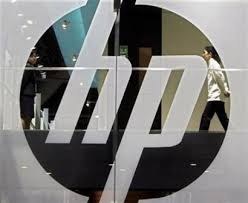 |
March 6, 2014 - Supply Chain Flagship Newsletter |
 |
| THIS WEEK'S SPONSOR: MHI |
 |
|
 |
|
|||||||||||||||||||||||||||||||||||||||||||||||||||||||||||||||||||||||||||||
Sorting Out the Supply Chain Software Market 2014
|
||||||||||||||||||||||||||||||||||||||||||||||||||||||||||||||||||||||||||||||
| GILMORE SAYS: |
"This all makes sense, as "integrated planning and execution" is now seen as the next phase of supply chain excellence." WHAT DO YOU SAY? |
Questions that should be right up my alley, right? Certainly these were bread and butter issues for me during my days heading up the supply chain sector practice at analyst firm Meta Group (later acquired by Gartner), although that was 15 or so years ago now. But of course I continue to follow the supply chain software market closely today at SCDigest.
I wish I could say an impressive and insightful response quickly rolled off my tongue. Instead, I managed to spit out a few thoughts that I hope sounded reasonable. That relative fail bothered me to no end for the rest of the day. So I committed to offer a fresh view of supply chain software here in 2014.
In great summary: the software is much, much better today in terms of quality and functionality than just a few years ago, but as the industry has matured, there is a lot less dynamism in the market, and that makes it much less interesting to potential buyers and observers like myself. Patterns and players have remained largely stable for years, even recognizing a number of software acquisitions over that time.
Will a new generation of Cloud-based providers shake the current status quo all up? A couple of years ago, I thought that would happen for sure, but I am less convinced of that right now (even while believing supply chain software is in the process of all going almost Cloud).
However, Art Mesher, the just retired CEO of Descartes Systems who gained fame as analyst with Gartner in the 1990s and won the CSCMP Distinguished Service Award a few years ago, thinks that this software disruption is in fact going to happen with what he calls "Clean Slate" providers - meaning Cloud offerings that will enable companies to start over with an entirely fresh set of Cloud-based supply chain solutions. More on that here from an interview with Art in a couple of weeks.
I believe that major ERP providers - mostly SAP and Oracle - continues to gain market share, but slowly. Both continue to make functionality improvements, but from my view, somewhat inconsistently. A couple of years ago, SAP made major gains in its WMS and TMS solutions, then you don't hear much. More recently, Oracle has clearly released some impressive functionality advances in areas like supply chain planning and TMS.
Infor is in the process of pulling all its myriad acquisitions together under a common technology platform, but still primarily finds supply chain success selling to its big installed base, though it has some interesting capabilities in certain areas for the general supply chain market, which it would like to penetrate. A work in progress for sure, but worthy of a look in many areas.
While most "best of breed" supply chain software vendors would still cite SAP and/or Oracle as their top competitors in the end, I would say for most of them that ERP does not loom as the medium-term existential threat that it seem to be in the mid-2000s. The best proof point of that is Manhattan Associates' soaring stock price and impressive sales growth in the past couple of years.
Not long ago, I would have organized the discussion here along supply chain planning and supply chain execution software lines, but of course JDA upended that a bit in late 2012 by merging with RedPrairie, bringing planning (JDA) and execution (RedPrairie) together.
That said, that view isn't completely right either, as the execution space has been incorrectly defined as mostly related to warehouse management systems, whereas there are many areas of execution, including manufacturing, retail store-level execution and more, some of which JDA already had before combining with RedPrairie.
Manhattan also has a number planning capabilities in addition to its strength in execution, plus a growing portfolio of retail-related solutions, in part exploiting the current multichannel commerce madness. Softeon and E2open, among others, also have planning elements in addition to a core focus on execution. This all makes sense, as "integrated planning and execution" is now seen as the next phase of supply chain excellence.
JDA and Manhattan in recent years have both spent a lot of effort building out truly integrated platforms, in which all of their many applications truly interoperate - important advances, still in progress, but more steak than sizzle.
In supply chain planning, Logility and Xinaxis are delivering solid results by sticking to their knitting, which is in the consumer goods and discrete manufacturing sectors, respectively, and bringing some differentiated functionality for those industries. I don't follow Adexa much, but it seems to be doing OK if not better, with planning solutions that interestingly cross discrete manufacturing, consumer goods and process industries.
ToolsGroup in my opinion has excellent planning software, starting with Inventory Optimization and more lately other planning tools. Headquartered in Boston, it is especially strong in Europe, and should be considered by anyone looking for planning solutions in the fast moving consumer goods and some other sectors.
Steelwedge has a compelling solution set in demand planning and S&OP tools, though like ToolsGroup it is still not as well-known as its functionality is good.
Supply chain network design still remains a distinct planning space, with LLamasoft carving out a really strong position here, and JDA (building from i2's Supply Chain Strategist), Insight and to a lesser extent Infor (CAPS Logistics) also competing in a growing space.
As noted above, the categories of software could be included under the supply chain execution umbrella is so broad that it basically defies an easy summary, but I will start with WMS.
In addition to the two big WMS guns, Manhattan and JDA, and the aforementioned Softeon, HighJump Software is a significant player, and has nicely recovered in the past few years under a new CEO from some stumbles it hit after it was spit back out as an independent company from 3M. Interestingly, it has also recently knocked down several major deals for a sort of "WMS-Lite" solution that enables in-store efulfillment for retailers. It calling card remains "adaptability."
In TMS, MercuryGate quietly - very quietly - continues to grow market share with its SaaS solution. Oracle, from acquired GLog, is noticeably not just standing pat to sell into the Oracle customer base but is continuing to invest and innovate in TMS. JDA has a richly functional solution that under its i2 roots sold mostly into large companies with major transportation transformation projects. JDA's challenge is to keep winning that business while also having success in less ambitious projects. Manhattan, LeanLogistics, IBM/Sterling and others are of course also important players in the TMS game.
The Global Trade Management (GTM) market is largely down to two, Amber Road and CDC Software, with Precision also in the game in some applications. GTM can also include supply chain visibility and international transportation management, areas which also include Descartes, E2open, GTNexus, IBM and many more, including hybrid software/service offerings from some 3PLs.
As best I can tell, the Manufacturing Execution System (MES) market still remains wildly fragmented and very industry-specific. That situation makes it a very hard software sector to cover, but SCDigest admittedly needs to do more in this area, which I promise we will soon.
I would love to go on, but I am out of space. That means I can't cover procurement related vendors here, as well as a few other spaces I left out.
So back to one of the original question posed to me: Who are the end interesting supply chain software vendors right now (almost by definition selections that will exclude the largest, most established players)?
My list includes: LLamasoft (growing planning footprint beyond network design, combined with clear intellectual energy), E2open (really a new class of Cloud-based visibility and collaboration solutions), Softeon (some very innovative capabilities) and - believe it or not - IBM, which somewhat under the radar (as strange as it is to say that about one of world's biggest companies) is building a heck of a supply chain software portfolio - which I expect it to add to before too long.
What would you add to Gilmore's overview of the current supply chain software market? Let us know your thoughts at the Feedback button or section below.
| View Web/Printable Version of this Page |
|
|
|
YOUR FEEDBACK
Continued emails coming in relative to our supply chain guru predictions for 2014, including our Feedback of the Week from Kate Vitasek, one of the creators of the " vested outsourcing" concept for 3PL relationships, who says predictions from Gartner that vested outsourcing won't take off are really quite positive.
We are also publishing a few emails on our expert advice to UPS to avoid a 2014 Christmas delivery fail.
Feedback of the Week: On Vested Outsourcing:
I read your First Thoughts column with great interest. Here's my feedback on the SC predictions (p2) piece: Gartner is projecting an upward trend that could double in a very short time - going from about 10% to about 20% in three years. This may not be viewed as a "take off" - but it is indeed a very solid growth curve. I am also very pleased that Gartner cites the Vested methodology for creating value-based partnerships and it's growing popularity. The University of Tennessee has spent more than a decade studying HOW to get value-based partnerships right and I am excited that Gartner recognizes the value of our methodology. 1) Having the courage to make the physical break from a transactional model to Vested's outcome-based model. Corporate policies and dogma will need to be challenged, and many individuals look at what needs to be done and don't want to challenge existing policies. (For example, a long term agreement that’s maxed at two years with a 30 day term of convenience will not work in Vested and needs to be challenged!) 2) Not having the diligence to follow the Vested Five Rules. Our research clearly shows that what makes Vested so successful is when companies follow ALL Five Rules. Companies that take time to understand the Rules and follow the methodology can and are successful. I often get calls from companies saying "we just selected our supplier and have our contract done. How do we "get Vested"? Think about it: If you already have a contract and you DIDN'T follow the Five Rules you might as well throw it out and start over. (It's like putting your socks on after you’ve put your shoes on!) My biggest piece of advice is use the methodology at the START of the contract process. We offer a great online course called "Creating a Vested Agreement." Buyers and suppliers take the course TOGETHER and step-by-step create their agreement. At the end of the course, they will have constructed an actual contract that follows all Five Rules. Taking the course will ensure that you 1) understand the methodology and 2) follow the Five Rules. Kate Vitasek | Faculty |
||
| Feedback on Advice to UPS: | ||
Put all the ideas provided by the experts in the article on the table and there will be a UPS (parcel) solution for Xmas 2014. Simply stated, this debacle was the result of the "never ending" discussion of collaboration, lack of, between real partners. I would also add that is a prime example of when the abilities of the virtual world (almost limitless) run smack into the physical world (limitations). The "future drone solution" would not have even solved this one. Gene Nusekabel Columbus, OH
|
||
What planet is Greg Aimi on? To say "This past year in particular, I think, caused a unique challenge in that Christmas was on a Wednesday" Is ludicrous. Christmas falls on a Wednesday once every 7 years, so why is this so unusual? Nick Hutchin Editor's Note: In fairness to Aimi, I think his reponse would be tha ecommerce volumes were a small fraction seven years ago versus what they were in 2013. His point was just that the timing this year was such that there weekend contributed to the surge of last minute order volumes that had to be delivered in one or two days. Now should the forecasters have taken that into account? Sure. But it appears they didn't. |
||
I agree with almost everything your experts had to say. It seems so obvious now that UPS should have known a train wreck was coming and then did nothing to stop it. Jim Tompkins is right - this was a failure of UPS leadership. They could see the Titantic was sinking and stood watching on the decks. I have to believe UPS and FedEx will implement policies along the lines of what Jerry Hempstead suggests, ideas which etailers may not like but are necessary for the carriers to operate successfully. Alex Beaucamp Denver |
SUPPLY CHAIN TRIVIA ANSWER
Q: What is the rank of these five US manufacturing in terms of current output(2013) versus the Federal Reserve’s baseline year of 2007 (index = 100)? Food, Motor vehicles and parts, chemicals, semiconductors, and pharmaceuticals?
A: (1) Semiconductors – 239 (2) Motor vehicles – 106 (3) Food – 103 (4) Chemicals – 87 (5) Pharma – 81
| © SupplyChainDigest™ 2003-2013. All Rights Reserved. SupplyChainDigest PO Box 714 Springboro, Ohio 45066 |
POWERED BY: XDIMENSION
|









